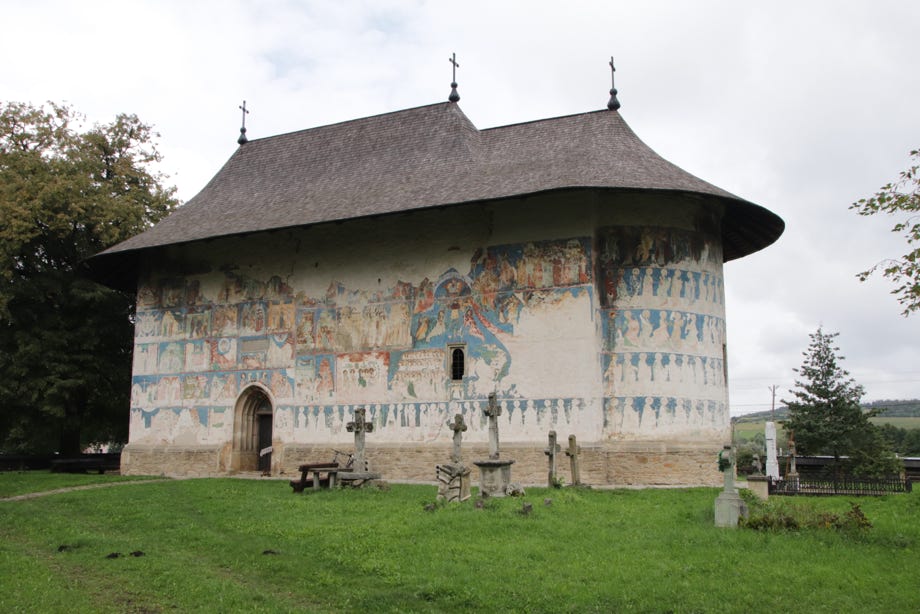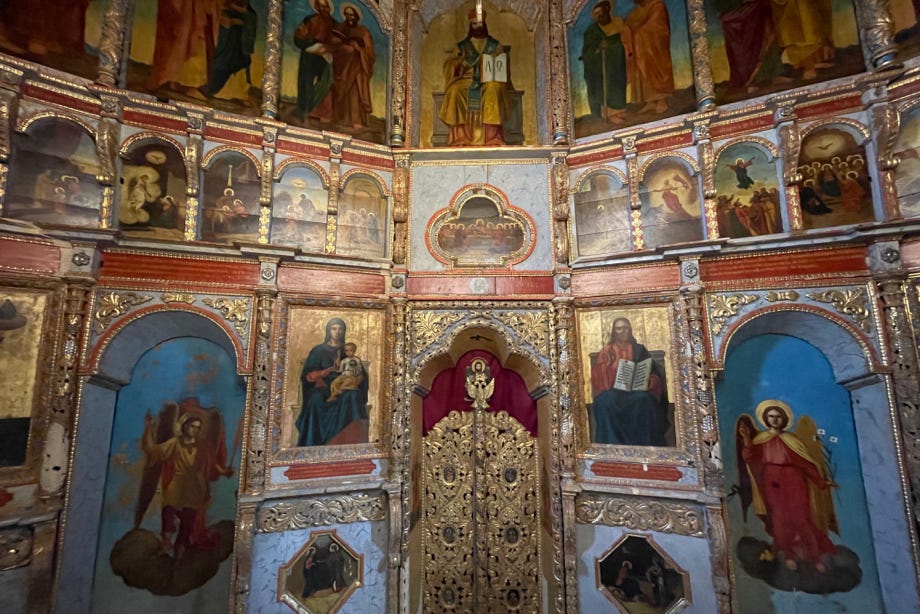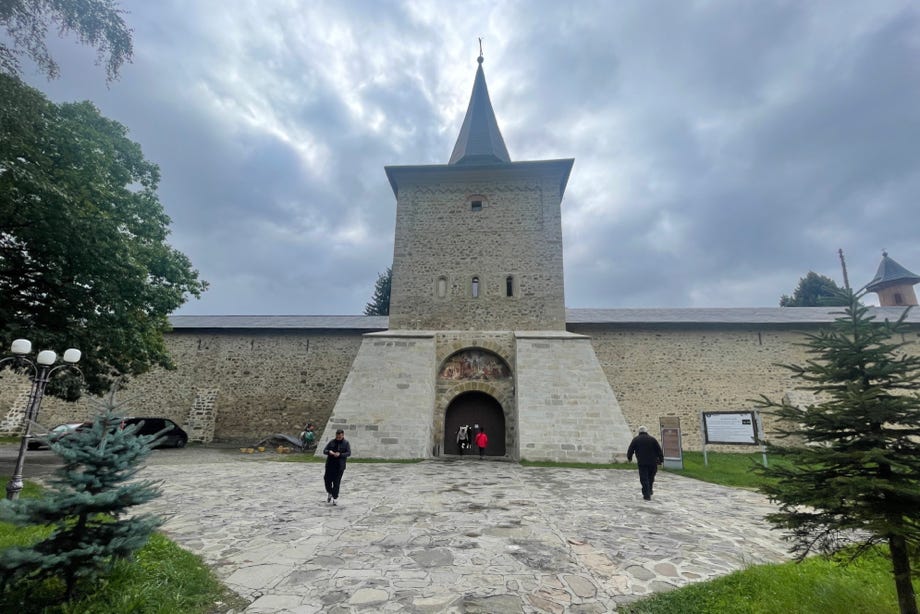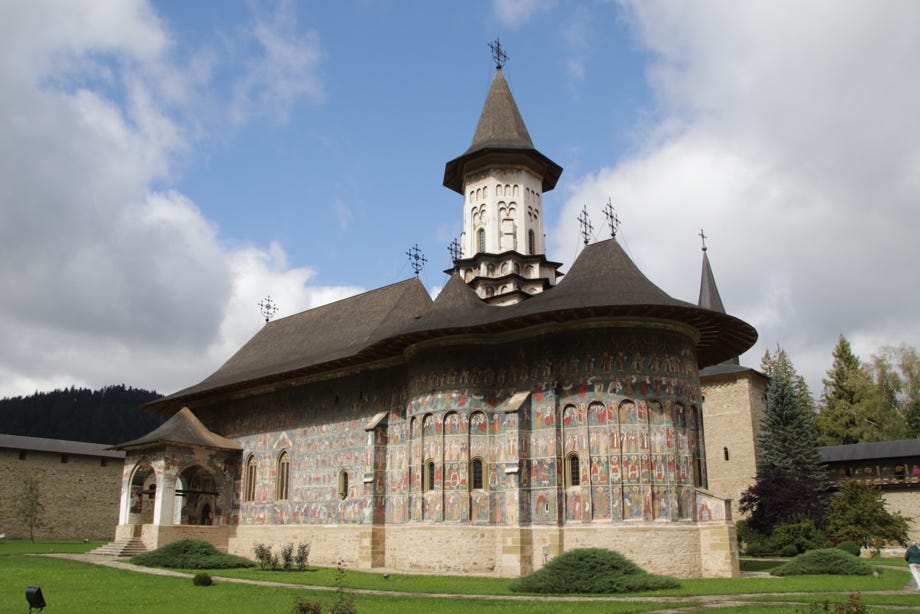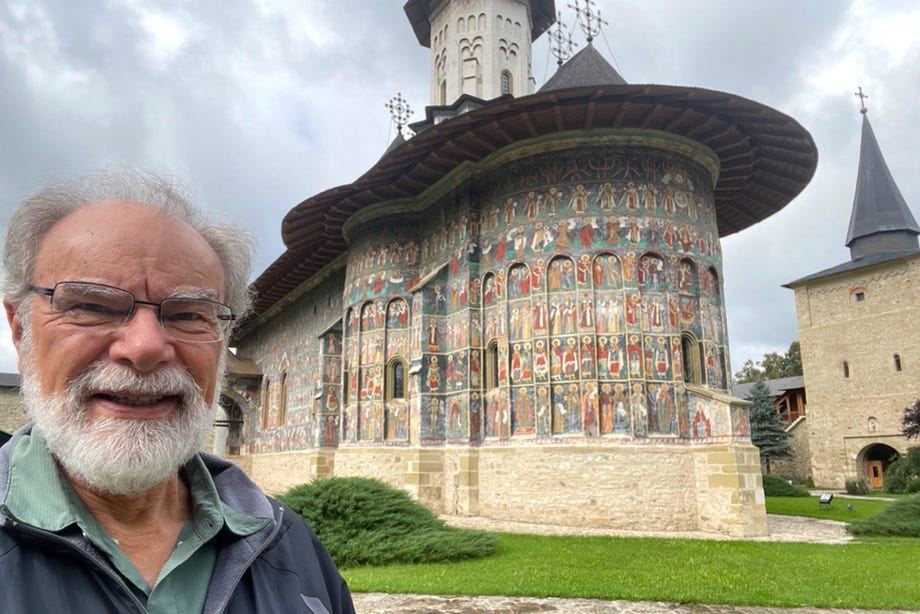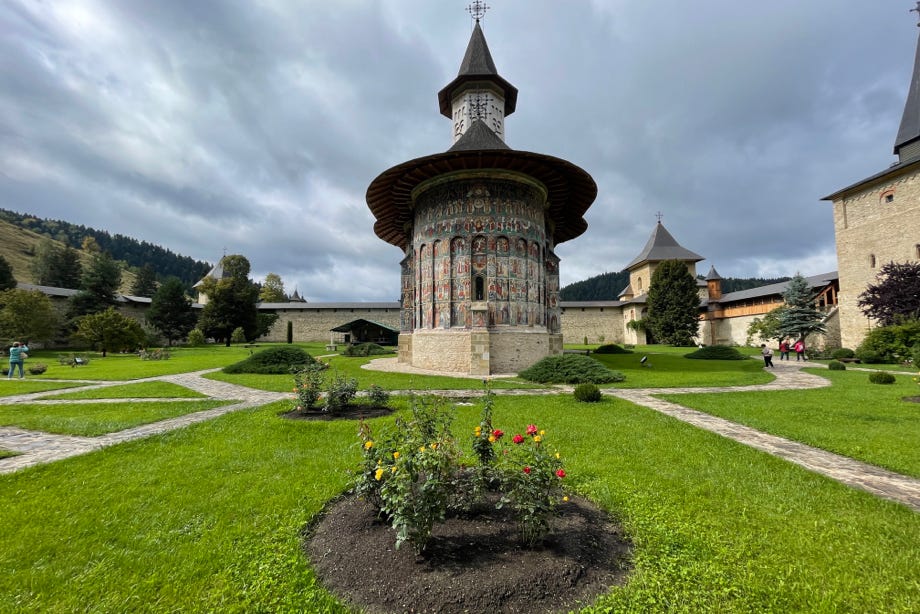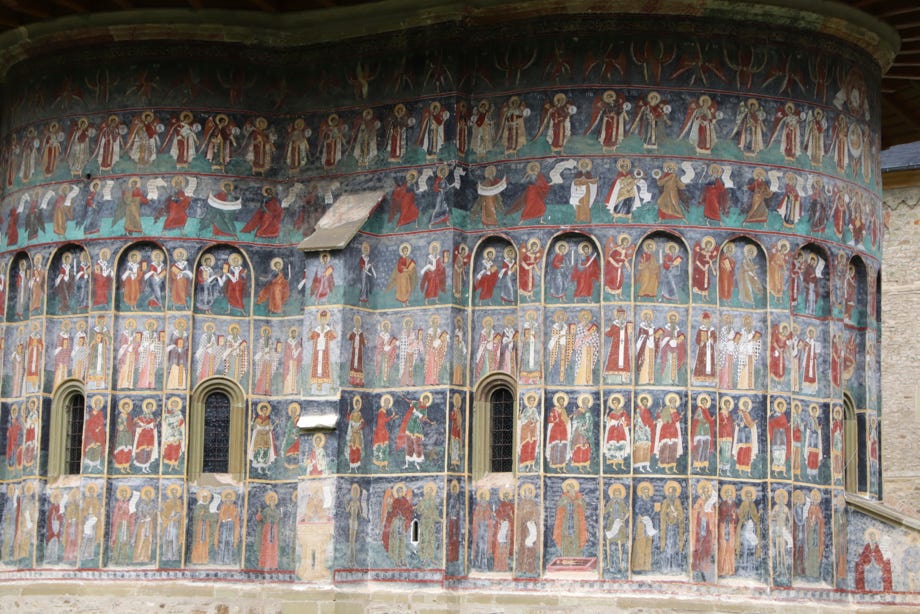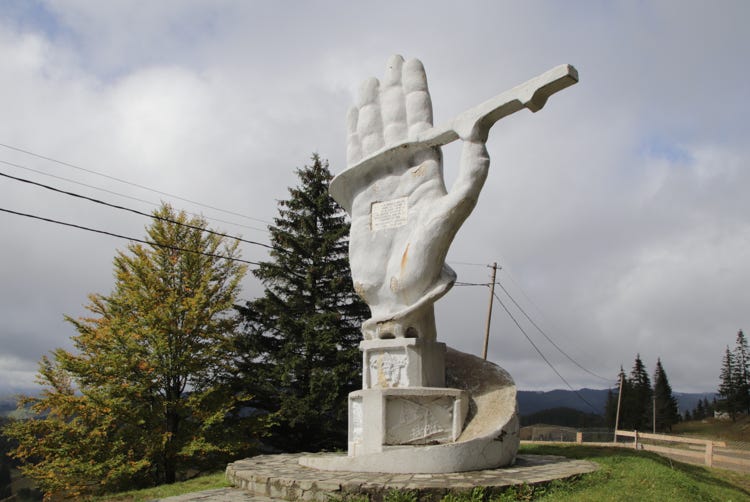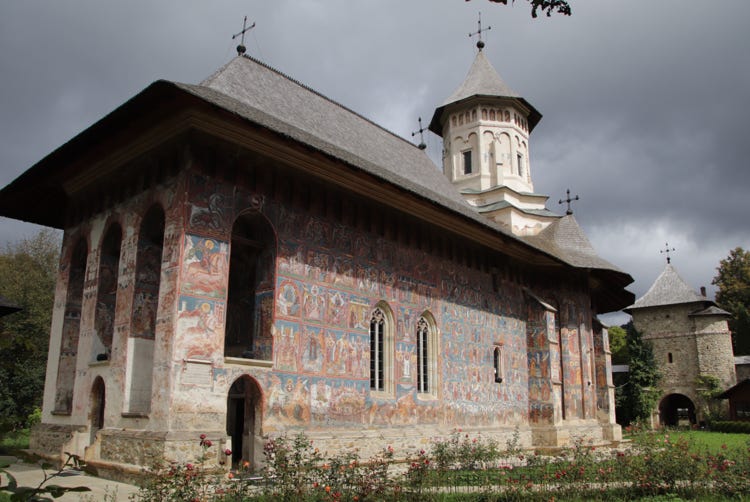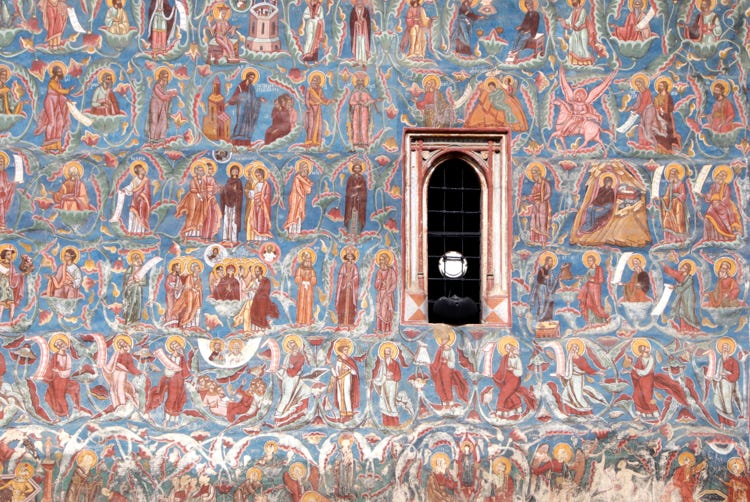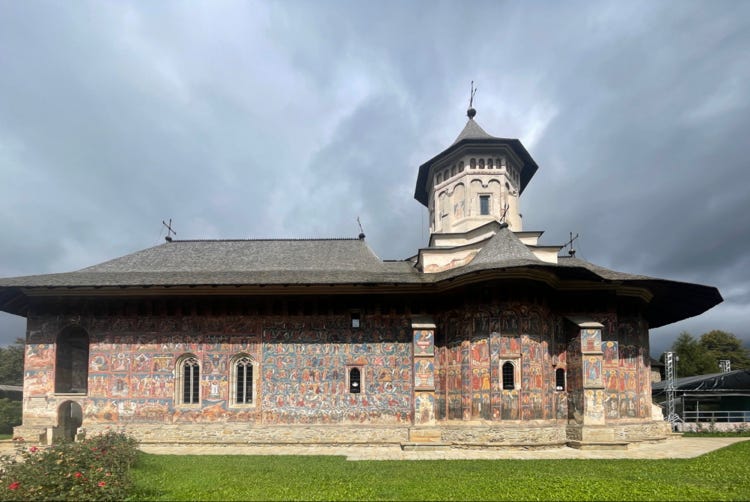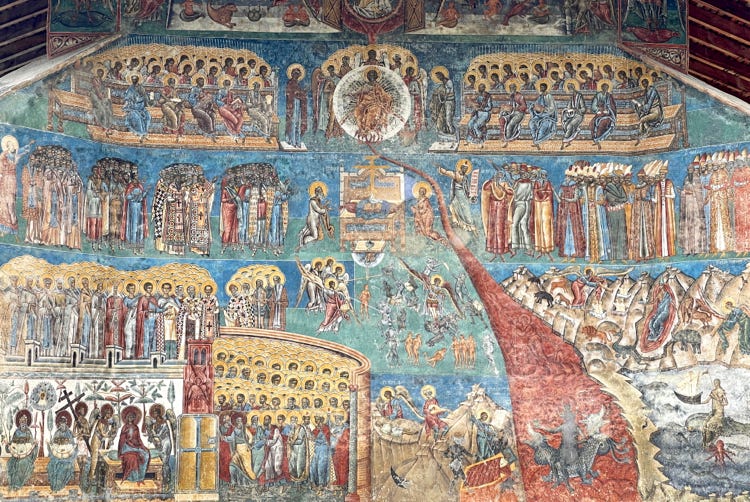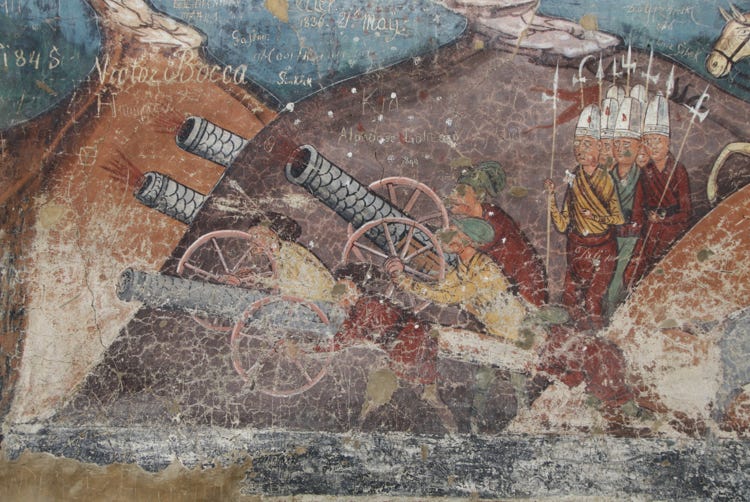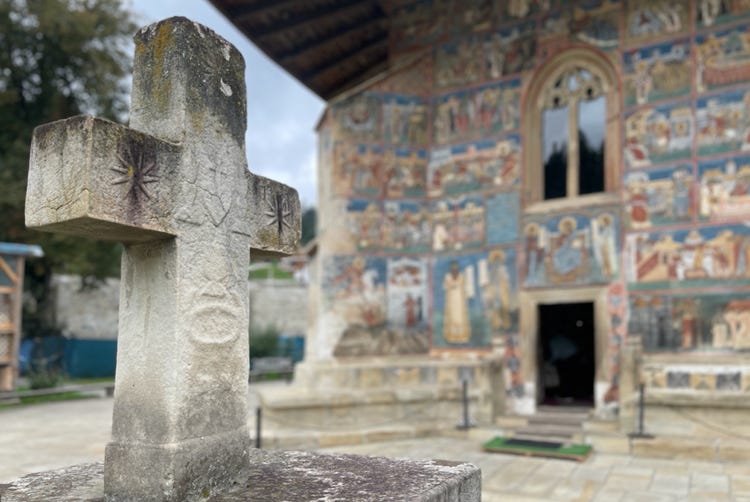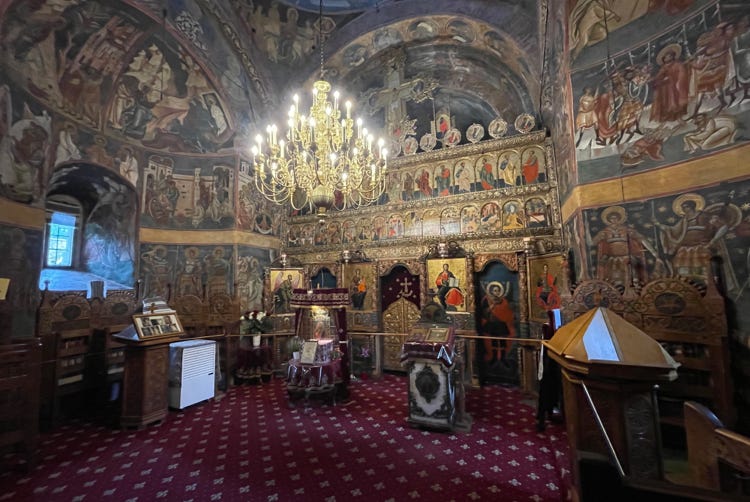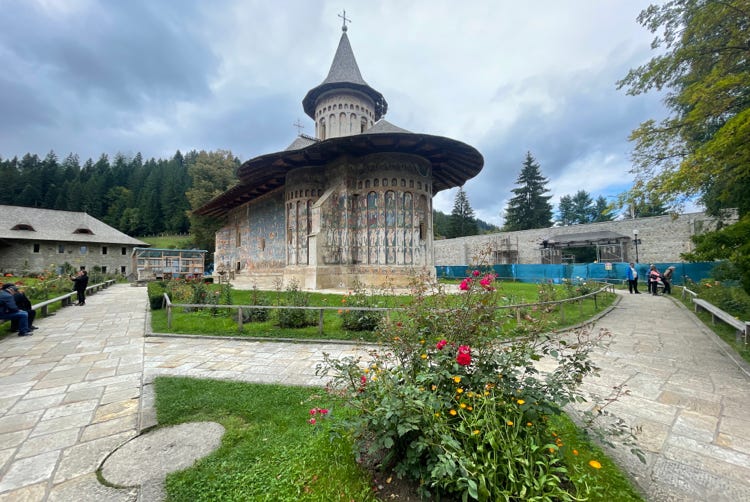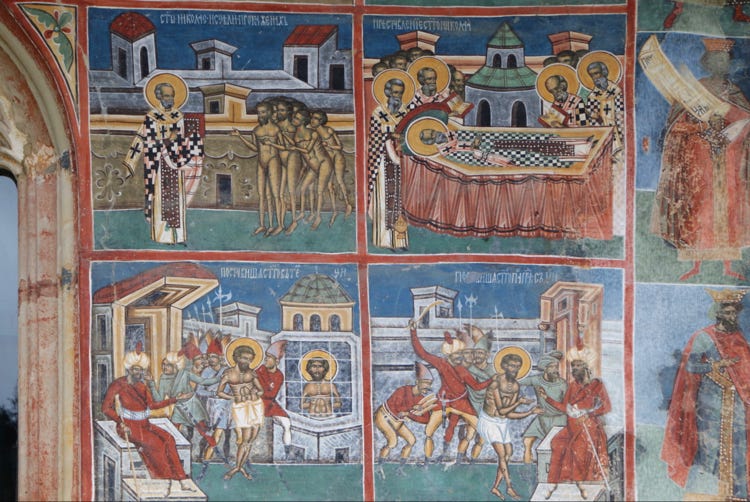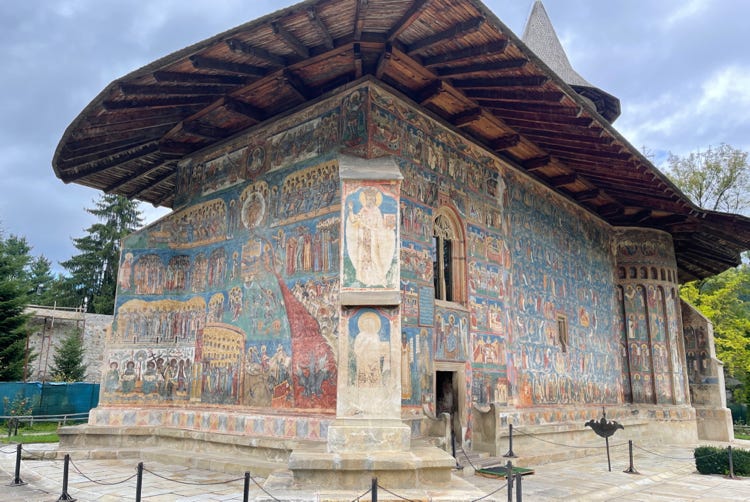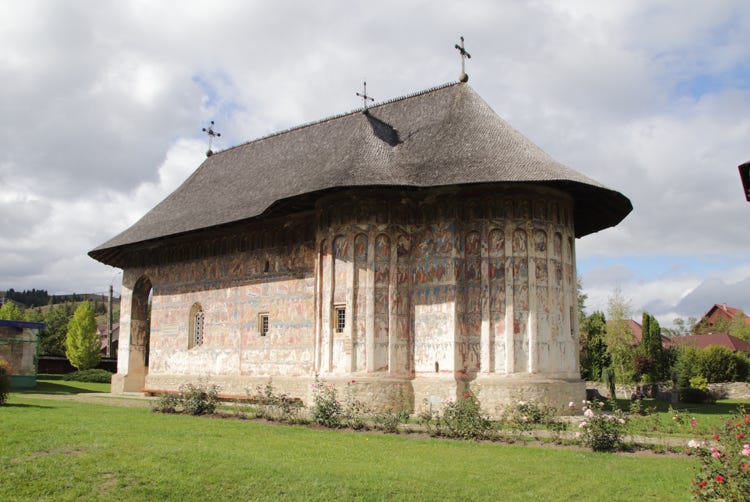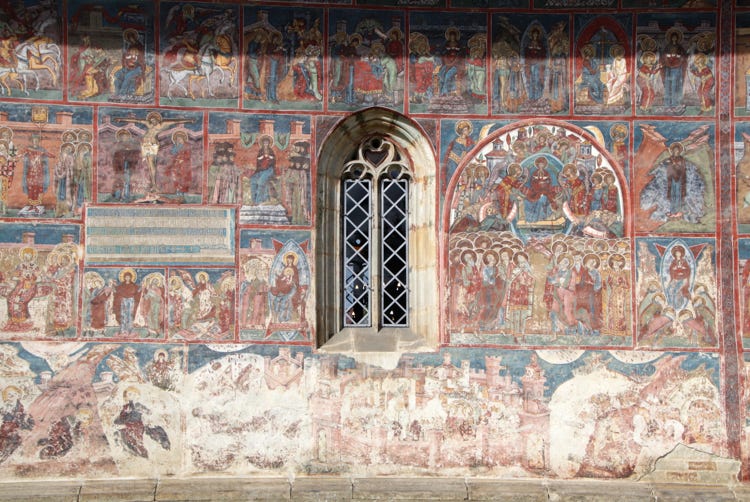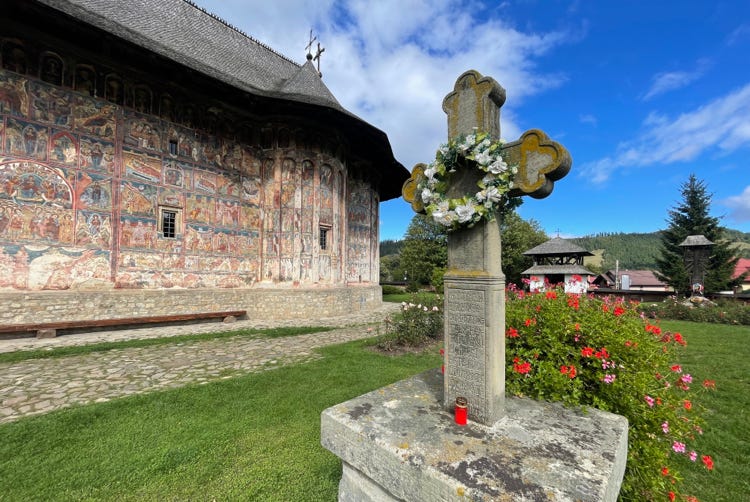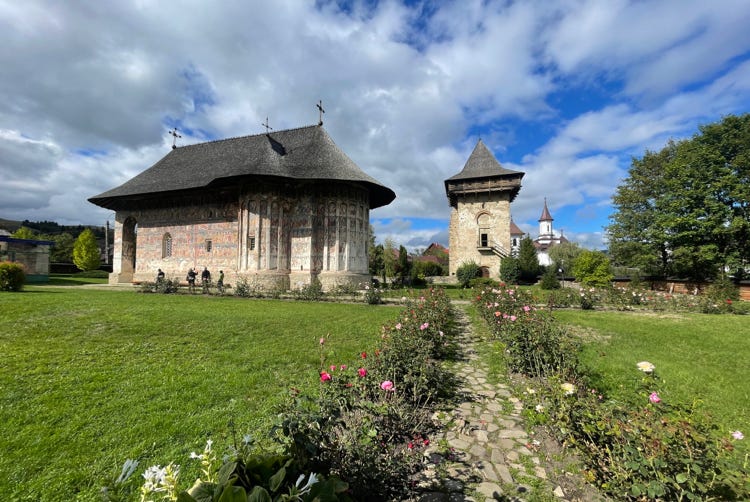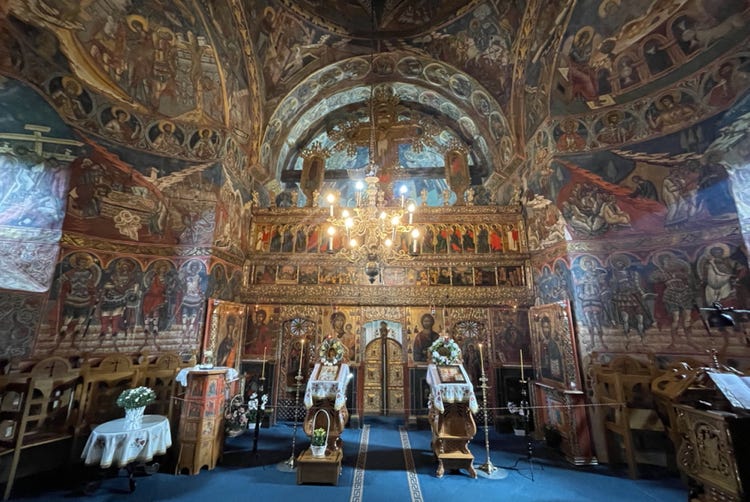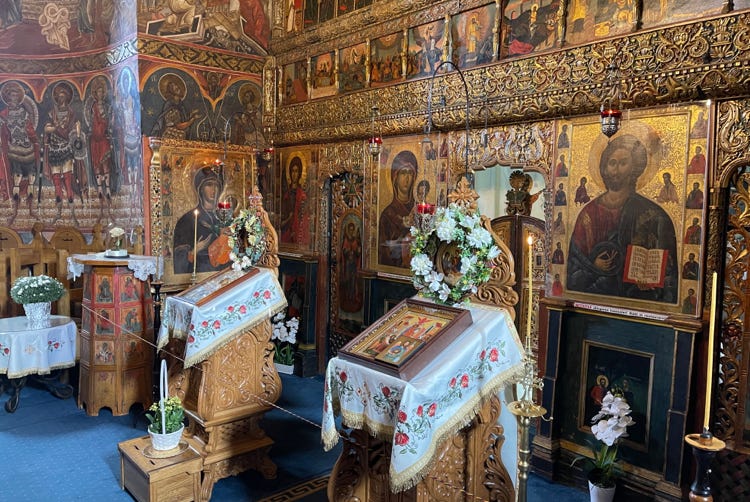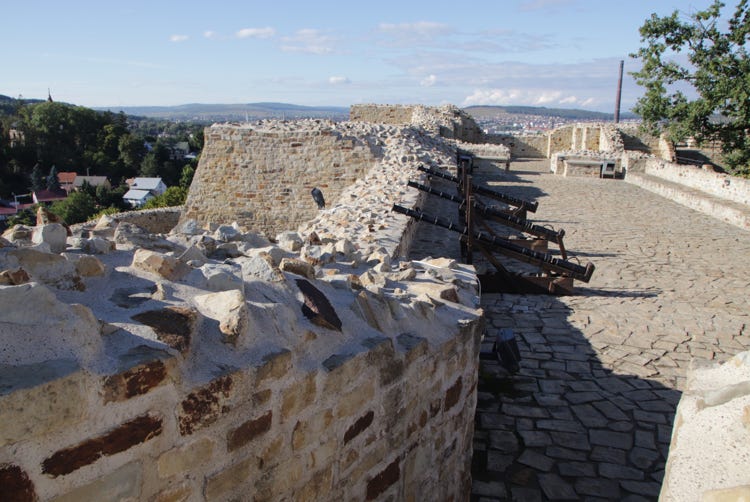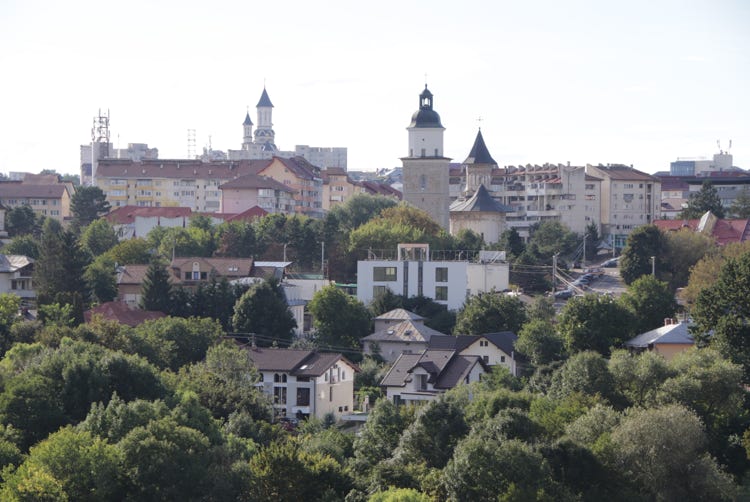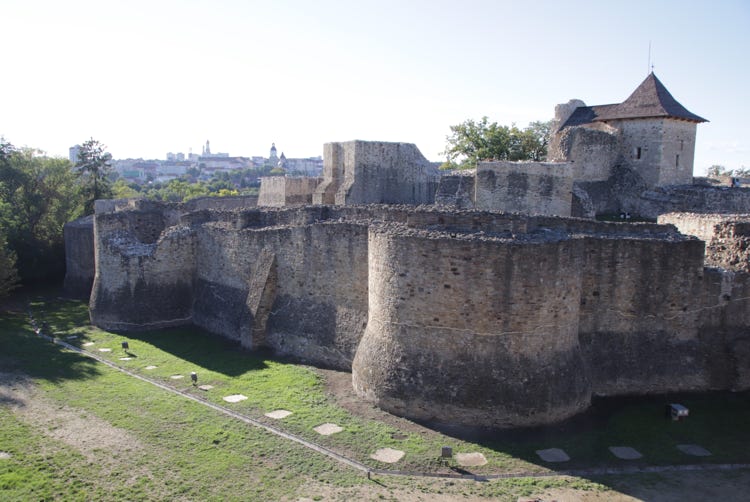
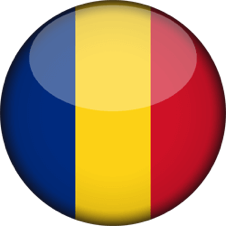
Bucovina

Distance travelled = 187 kilometres driving by road and 7.8 kilometres walking (10,400 steps).
Despite the challenges presented by today’s highly changeable weather, I achieved my goal of exploring one of Romania’s most remarkable features – the painted monasteries of the Bucovina region of Moldavia. Much of the day was grey and overcast, but there were splashes of sunshine (which is I when I madly took my photos) as well as extended periods of rainfall. Temperatures in the morning ranged from 12°C in Suceava down to 8°C in the hills, but up to 15°C in the late afternoon when the clouds cleared to reveal clear, blue skies.
As I went to breakfast this morning, I asked the hotel staff an important question – how do you pronounce the name of this city – “Suceava”? The answer was a very quickly spoken ‘Soo-cha-va’, which strong emphasis on the first syllable.
Most of the Bucovina region lies to the west of Suceava, and its painted monasteries are highly distinctive. Although some frescoes are fading (usually on the cold northern sides of each building), most of the colours remain bright despite their antiquity. Most date from the 15th and 16 centuries when Orthodox Christian Moldavia was fighting for its survival against the Ottoman Turkish Empire. The frescoes were both an expression of religious faith and a means to teach then-then largely illiterate population about Biblical truths.
I set out this morning at about 9:15am in the grey drizzle to head for the first monastery, the seldom-visited Arbore Monastery in the village of Arbore. Established in 1503, this small monastery has UNESCO protection, and true to expectations, I was the only visitor present. The interior was less lavish than the larger monasteries I was to visit later in the day, but was very impressive nonetheless. The exterior frescoes were fairly intact on the western wall, but they had largely faded away on the other walls.
The second monastery I visited was the Suceviţa Monastery in the village of Suceviţa. It was built in 1582 to 1601, making it the last painted monastery to be constructed. In stark contrast to the intimacy of Arbore Monastery, this impressive structure is the largest monastery in Bucovina and is famous for one of its exterior frescoes known as the “Ladder of Virtues”. This huge but slightly faded fresco shows 32 steps to heaven, exhorting priests to righteous behaviour and to avoid the fate of some clerics who are shown tumbling down from the ladder die to sins such as greed or vanity.
My drive continued up through bucolic mountain scenery, crossing the ridge at Ciumârna Pass (1,100 metres altitude), clearly marked by a huge statue of a human hand. Apparently the monument was built in 1968 to honour the road workers who built the road through the mountain pass.
The next monastery I visited was the Moldoviţa Monastery in the village of Moldoviţa. Built in 1532, the monastery is situated in grounds that are beautifully manicured by the resident nuns. In addition to the “usual” Biblical frescoes, the main building of the monastery features depictions of the siege of Constantinople (now Istanbul) in 626AD.
The penultimate monastery I visited was the Voroneţ Monastery in the town of Voroneţ. It is renowned for its widespread use of vibrant cerulean blue in its frescoes (giving rise to the colour known as “Voroneţ Blue), especially in the detailed depiction of “The Last Judgement”. Sadly, this was the only monastery visit I made today during which no sun shone (and indeed it was raining for much of my visit), so I wasn’t able to gauge the true impact of the famous blue colour.
Although my final monastery – the Humor Monastery on the outskirts of the village of Humor – was only a short drive from Voroneţ, the clouds cleared while I was driving and the monastery remained bathed in sunlight for the duration of my visit. Built in 1530, the monastery has an adjacent tower which I climbed (with difficulty up very steep, very uneven, unlit stone steps) to admire the view of the monastery grounds and the nearby countryside. Continuing the theme of fighting the Ottoman Turks, this monastery featured a depiction of the Siege of Constantinople in 1453.
By the time I left Humor at 4:15pm, I felt I had experienced a good range of painted monasteries, so I drove back to Suceava in glorious sunshine that was unlike anything I had experienced earlier in the day. It was a little after 5:00pm by the time I reached Suceava, but as the sunlight was so good I decided to make one more visit rather than just returning to my hotel.
Although it took a bit of navigating, I drove to Suceava’s Royal Citadel (Cetatea de Scaun), which lies in a surprisingly hidden location a short distance to the east of the main city. Built in the 14th century, the citadel had been abandoned and lay in ruins until a major renovation funded by the EU was undertaken from 2012 to 2015.
The result was very impressive. It was possible to explore most of the citadel, including climbing the defensive walls and ramparts, and the displays through the castle were informative, imaginative and clearly geared towards children judging by the clever use of lighting, A/V displays and buttons to press. It didn’t just appeal to children though – I was quite impressed too, especially by the panoramic views afforded from the top of the walls across the surrounding landscape.

